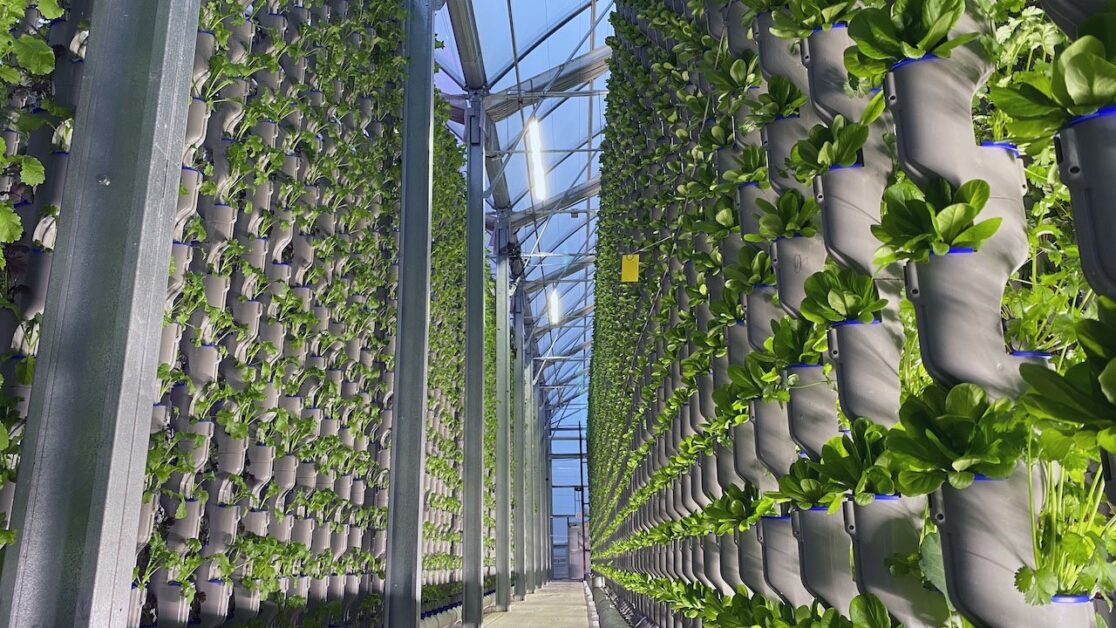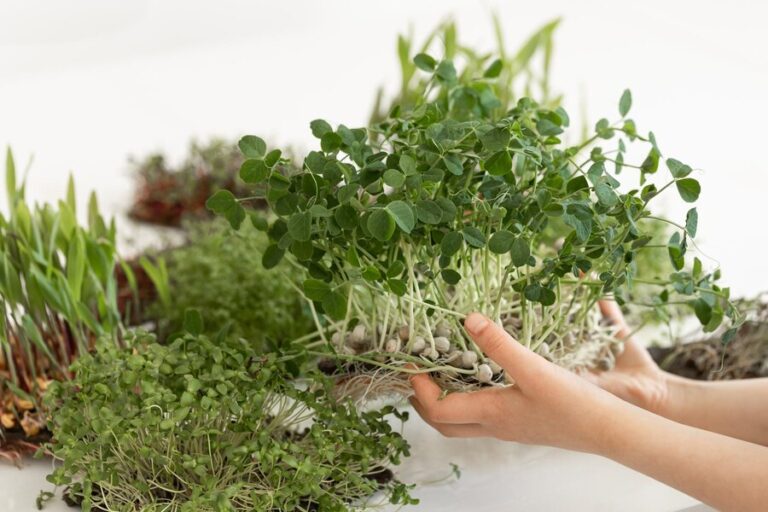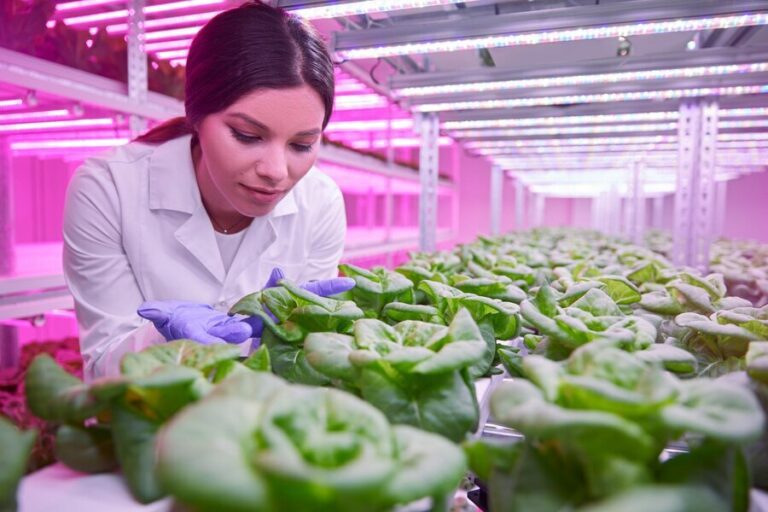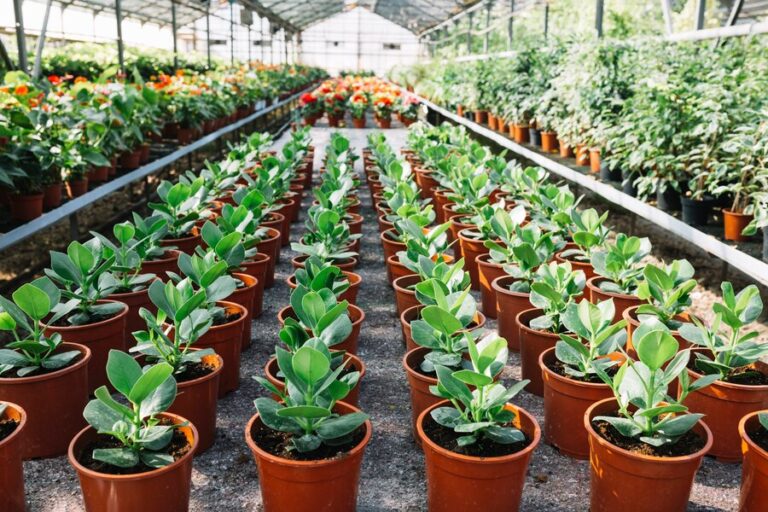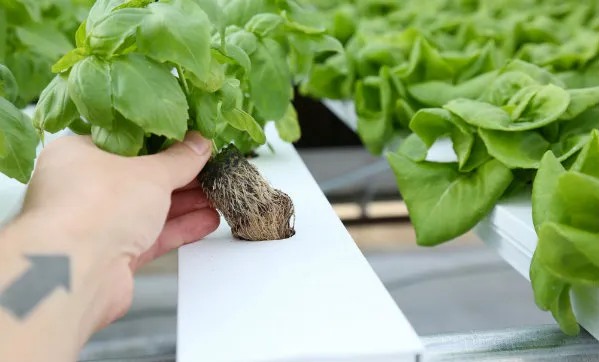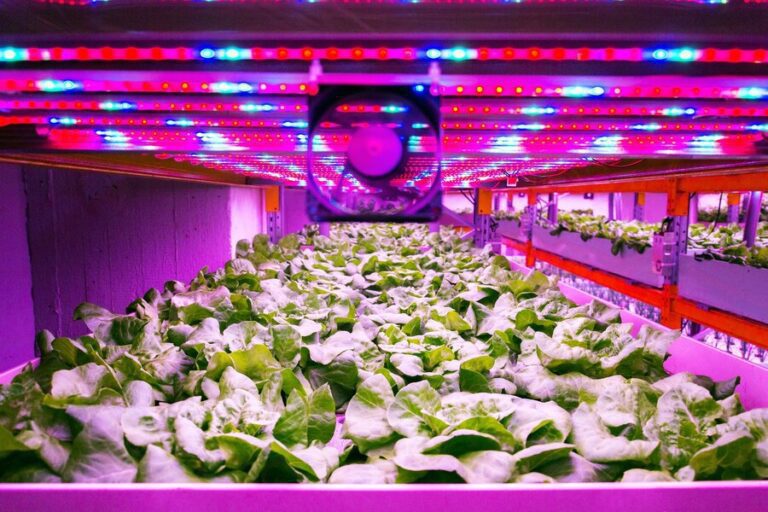The 5 Best Hydroponic Books to Read in 2022
Table of Contents
“Understanding the Basics of Hydroponics”
Hydroponics is an innovative gardening technique that is gaining popularity among gardening enthusiasts and professionals alike. Unlike traditional soil-based gardening, hydroponics involves growing plants without soil, using a nutrient-rich water solution instead. This method allows plants to absorb nutrients more efficiently, resulting in faster growth and higher yields.
One of the key advantages of hydroponics is its flexibility. Since plants in a hydroponic system are not dependent on soil, they can be grown virtually anywhere, even in urban environments with limited space. This makes hydroponics an ideal solution for those living in apartments or houses with small yards. Additionally, hydroponics allows for precise control over the growing conditions, including temperature, humidity, and nutrient levels, ensuring optimal plant growth.

In the next section, we will delve deeper into the different types of hydroponic systems and explore their unique characteristics and benefits. By understanding the basics of hydroponics, you will be equipped with the knowledge to embark on your own hydroponic gardening journey and experience the numerous advantages this method has to offer. So, let’s dive into the world of hydroponics and discover the endless possibilities it holds for indoor and outdoor cultivation.
“Exploring Different Hydroponic Systems”
When it comes to hydroponics, there are various systems that gardeners can explore to cultivate plants in a soil-less environment. Each system offers unique advantages and considerations, allowing gardeners to choose the best fit for their needs. One popular system is the Nutrient Film Technique (NFT), where a thin film of nutrient-rich water is continuously circulated over plant roots. This system is known for its efficiency in water and nutrient usage, making it ideal for those seeking a more sustainable approach to gardening.
Another widely used system is the Deep Water Culture (DWC), also known as the floating raft technique. In this system, plants are grown in a floating foam raft, while the roots are submerged in a nutrient solution. The simplicity of the DWC system makes it a favorite choice among beginners in hydroponics, as it requires minimal equipment and offers excellent oxygenation to the plant roots.
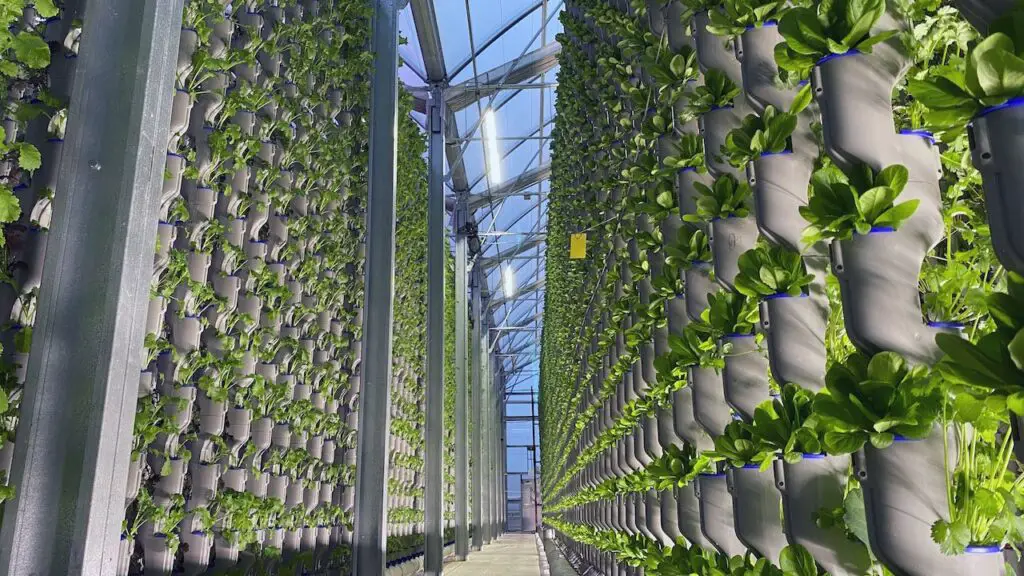
For gardeners who prefer a more versatile option, the Ebb and Flow system, also known as flood and drain, is worth exploring. This system alternates flooding the plant roots with a nutrient solution and then draining it away, creating a cycle that promotes healthy root growth. The Ebb and Flow system is suitable for a wide variety of plants, making it a popular choice for hobbyists with diverse gardening preferences.
As gardeners delve into hydroponics, it is important to explore various systems to find the one that suits their needs and preferences. Each system offers different benefits and considerations, allowing gardeners to experiment and optimize their plant growth in a soil-less environment.
“The Benefits of Hydroponic Gardening”
Hydroponic gardening offers a multitude of benefits that make it an attractive option for both home gardeners and commercial growers. One of the key advantages is the ability to grow plants without soil. This eliminates the need for traditional gardening practices such as weeding, tilling, and dealing with soil-borne pests and diseases. As a result, hydroponic gardens require less physical effort and time, allowing gardeners to focus on other aspects of plant care.
Another significant benefit of hydroponics is the increased control over nutrient levels and water usage. By providing plants with a nutrient-rich solution directly, growers can ensure that plants receive the optimal balance of nutrients needed for healthy growth. Moreover, hydroponics typically uses water more efficiently compared to traditional soil-based gardening methods. In hydroponic systems, water is recirculated through the system, reducing water waste and making it a more sustainable option in areas with limited water resources.
In addition to these advantages, hydroponic gardening allows for year-round cultivation, regardless of climate and season. With the ability to control the environment, including temperature, humidity, and lighting, growers can create optimal growing conditions for plants. This means that hydroponic gardens can thrive even in areas with harsh weather conditions or limited access to arable land.
Overall, the benefits of hydroponic gardening are numerous and impactful. From reducing physical labor and water usage to providing year-round cultivation opportunities, this innovative gardening method offers a sustainable and efficient approach to growing plants. Whether it’s for personal enjoyment or commercial purposes, hydroponics has the potential to revolutionize the way we grow and consume fresh produce.
“Mastering Nutrient Solutions in Hydroponics”
To achieve successful hydroponic gardening, mastering nutrient solutions is essential. Nutrient solutions are carefully formulated mixtures of essential elements that provide plants with the necessary nutrients for optimal growth and development. These solutions are specifically tailored to meet the specific needs of each plant species, ensuring that they receive the right balance of macronutrients (such as nitrogen, phosphorus, and potassium) and micronutrients (such as iron, manganese, and zinc).
Creating a well-balanced nutrient solution requires a thorough understanding of plant nutrient requirements and the ability to adjust the solution based on the plant’s growth stage. Nutrient ratios may vary depending on the specific growth phase, as plants have different nutritional needs during germination, vegetative growth, and flowering. Monitoring and adjusting the nutrient solution’s pH level is also crucial, as it affects nutrient availability and uptake. Moreover, maintaining an appropriate electrical conductivity (EC) level ensures that the nutrient solution provides optimal nutrition without causing nutrient imbalances or toxicity.
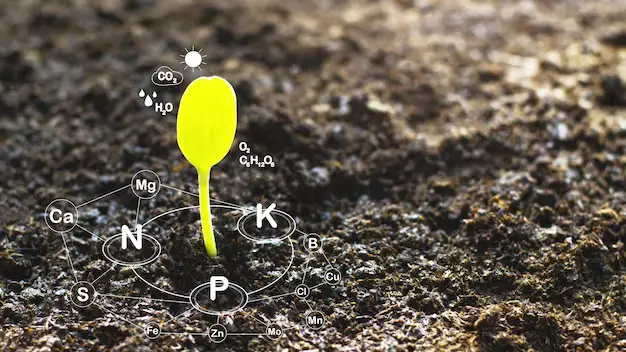
Hydroponic gardeners have access to various commercially available nutrient solutions, each formulated for specific plant types or growth stages. These solutions often come in concentrated forms and require proper dilution before application. Dilution should be done carefully, following the manufacturer’s instructions to avoid over or underfeeding the plants.
Achieving mastery in nutrient solutions involves continuous monitoring of the plant’s health and adjusting the solution accordingly. This can be done through regular testing of the nutrient solution’s pH and EC levels, as well as observing the plants for any signs of nutrient deficiencies or excesses. By maintaining a balanced and well-tailored nutrient solution, hydroponic gardeners can provide their plants with the optimal conditions required for healthy growth and maximum yields.
“Choosing the Right Lighting for Hydroponic Gardens”
Choosing the right lighting for hydroponic gardens is crucial for the success of your plants. In hydroponics, plants are grown indoors without natural sunlight, so providing them with the right type and intensity of artificial light is essential. The two main options for hydroponic lighting are LED (light-emitting diode) and HID (high-intensity discharge) lights.
LED lights have gained popularity in recent years due to their energy efficiency and customizable spectrums. They produce less heat, which reduces the risk of damaging your plants or experiencing temperature-related problems in your growing environment. LED lights also have a longer lifespan compared to HID lights, which can help save on replacement costs in the long run. Furthermore, LED lights offer a wide range of spectrums that can be tailored to specific plant growth stages, allowing you to create customized lighting schedules for optimal growth.
On the other hand, HID lights, such as high-pressure sodium (HPS) or metal halide (MH) lamps, have been traditionally used in hydroponics. They are known for their high light intensity, which is beneficial for plants during the flowering or fruiting stage. HID lights produce a balanced spectrum that can promote robust plant growth, but they generate more heat compared to LED lights. Therefore, proper ventilation and heat management are essential when using HID lights to prevent overheating and ensure a suitable growing environment.
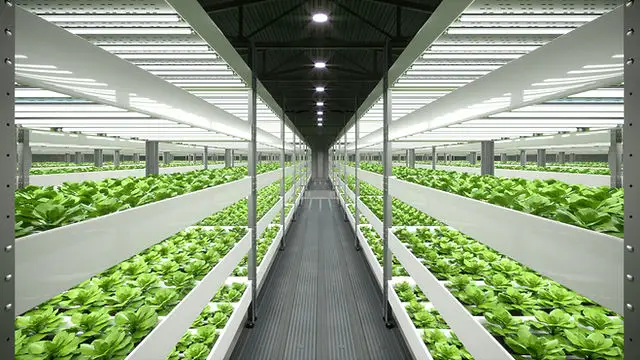
Ultimately, the choice between LED and HID lights for your hydroponic garden depends on various factors such as the type of plants you are growing, your budget, and the available space. It is recommended to research and compare different lighting options before making a decision. Additionally, consulting with experienced hydroponic growers or specialists can provide valuable insights and help you choose the best lighting solution for your specific needs.
“The Role of pH and EC in Hydroponic Growing”
Maintaining the optimal pH and electrical conductivity (EC) levels in hydroponic systems is crucial for the successful growth of plants. pH refers to the acidity or alkalinity of the nutrient solution, while EC measures the concentration of essential nutrients in the solution.
In hydroponics, the ideal pH range for nutrient absorption and overall plant health is typically between 5.5 and 6.5. This range ensures that nutrients are readily available to the plants without being excessively acidic or alkaline, which can lead to deficiencies or toxicities. Regularly monitoring and adjusting the pH level of the nutrient solution is vital to prevent nutrient lockout and ensure that plants can uptake the necessary nutrients for development.
On the other hand, EC is a measure of the nutrient concentration in the hydroponic solution. It indicates the strength of the solution and the availability of essential elements for plant uptake. By measuring EC, growers can ensure that plants receive an adequate amount of nutrients without over or underfeeding them. Monitoring and adjusting the EC levels throughout the growth cycle is critical for promoting healthy foliage growth, root development, and overall plant productivity.
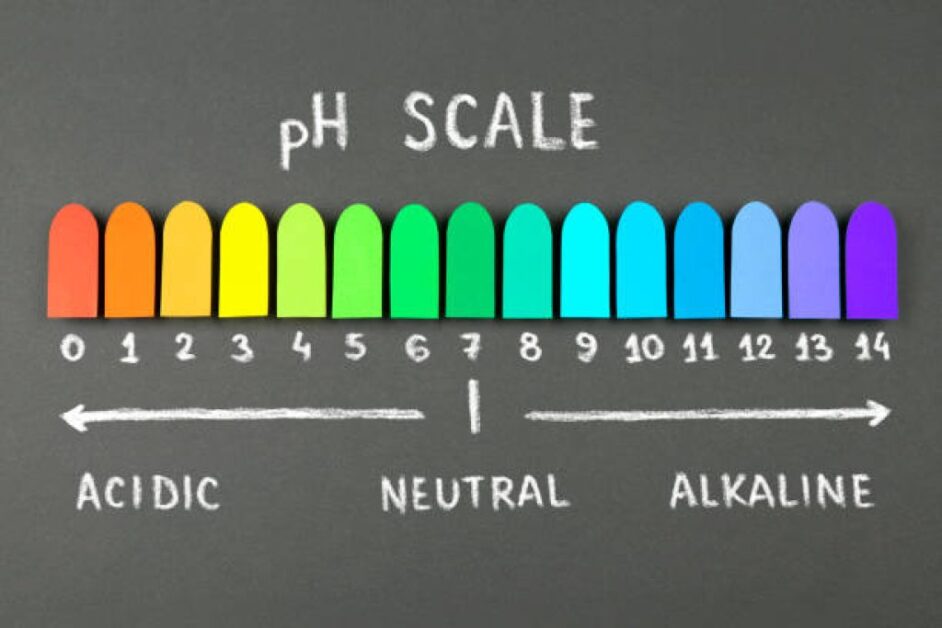
Maintaining the proper pH and EC levels in hydroponic systems can be achieved using various methods. pH adjustment can be done by adding acids or bases to the nutrient solution, while EC can be controlled by adding or diluting nutrients accordingly. It is essential to regularly test the nutrient solution using a reliable pH and EC meter, as well as keeping a record of the readings to track any fluctuations or trends over time. By carefully managing these factors, growers can create an optimal growing environment for their hydroponic plants, resulting in healthier and more abundant harvests.
“Common Challenges in Hydroponics and How to Overcome Them”
Growing plants in a hydroponic system can present unique challenges that are different from traditional soil-based gardening. One common challenge is maintaining proper nutrient levels in the water solution. Unlike soil, hydroponic plants rely solely on nutrient-rich water for their growth. If the nutrient levels are too high or too low, it can cause nutrient deficiencies or toxicities, which can negatively impact plant health and productivity. To overcome this challenge, it is essential to regularly monitor and adjust the nutrient solution based on the specific needs of the plants. Conducting regular water and nutrient solution tests using an EC (electrical conductivity) meter and pH meter can help ensure the optimal nutrient balance is maintained. Additionally, utilizing high-quality, pre-formulated nutrient solutions designed for hydroponics can provide a consistent and balanced nutrient supply.
| Challenge | Overcoming Strategies |
|---|---|
| Nutrient Imbalance | Regularly monitor nutrient levels; adjust accordingly. Use a balanced nutrient solution. |
| pH Fluctuations | Regularly check and adjust pH levels. Use pH buffers and maintain a stable pH range. |
| Disease and Pests | Implement good hygiene practices. Use natural predators or organic pesticides. Quarantine affected plants. |
| Temperature Control | Maintain optimal temperature range. Use heaters or coolers as needed. Monitor and adjust environmental conditions. |
| Inadequate Oxygen Levels | Ensure proper aeration in the nutrient solution. Use air stones or oxygen pumps. Maintain dissolved oxygen levels. |
| Poor Lighting Conditions | Provide adequate and consistent light. Use high-quality grow lights and ensure proper light duration for each crop. |
| Root Issues (e.g., root rot) | Monitor root health regularly. Provide proper aeration and avoid overwatering. Use beneficial microbes or fungicides. |
| Equipment Malfunctions | Regularly inspect and maintain hydroponic systems and equipment. Have backup systems in place. |
| Crops Variability | Standardize growing conditions. Monitor and adjust variables to ensure uniformity across crops. |
Another common challenge in hydroponics is managing the potential for disease and pest outbreaks. With the absence of soil, hydroponic systems may seem less susceptible to pests and diseases. However, improper hygiene practices, contaminated water or growing mediums, and the introduction of infected plants or pests can still lead to significant issues. Prevention is key in overcoming this challenge. Implementing strict sanitation measures, such as disinfecting equipment, regularly cleaning the hydroponic system, and using pest-resistant growing mediums, can help minimize the risk of disease and pest infestations. Additionally, practicing crop rotation and monitoring plants closely for any signs of pests or diseases can allow for early intervention and treatment if necessary. By following these preventive measures and promptly addressing any issues that arise, hydroponic growers can maintain a healthy and thriving garden.
“Exploring Advanced Techniques in Hydroponic Cultivation”
As hydroponic cultivation continues to gain momentum, growers are constantly seeking advanced techniques to maximize yields and optimize plant growth. These techniques are designed to provide plants with optimal conditions, ensuring they receive the necessary nutrients, light, and environmental factors for vigorous growth and abundant harvests. One such advanced technique is the use of aeroponics, a method that suspends plant roots in a mist of nutrient-rich water. This technique allows for increased oxygen uptake and nutrient absorption, resulting in faster growth rates and higher yields compared to traditional soil-based methods.
Another advanced technique that has gained popularity among hydroponic enthusiasts is the use of nutrient film technique (NFT) systems. In these systems, a thin film of nutrient solution is continuously circulated over the roots, providing a constant supply of water, oxygen, and nutrients. This technique not only promotes healthy root development but also minimizes water and nutrient waste, making it an environmentally-friendly choice. Growers have observed impressive results with NFT systems, reporting faster growth rates, higher yields, and better nutrient uptake by plants.
| Technique | Description |
|---|---|
| Nutrient Film Technique | A continuous flow of nutrient solution over plant roots |
| Aeroponics | Plants suspended in air; nutrient mist delivers nutrients |
| Aquaponics | Integration of fish farming with hydroponic cultivation |
| Vertical Farming | Growing plants in vertically stacked layers or towers |
| Controlled Environment | Precise control of temperature, humidity, and lighting |
| Drip Irrigation | Precise delivery of nutrient solution through drippers |
| Smart Sensors | Use of sensors to monitor and control environmental factors |
| LED Grow Lights | Customized light spectra for optimal plant growth |
| CO2 Enrichment | Controlled introduction of carbon dioxide for enhanced photosynthesis |
| Nutrient Monitoring | Regular analysis and adjustment of nutrient concentrations |
| Plant-Microbe Interaction | Harnessing beneficial microbial interactions for plant health |
| Hydroponic Fog Systems | Ultra-fine nutrient mist to envelop plant roots |
While these advanced techniques offer exciting possibilities for hydroponic growers, it is important to note that successful implementation requires careful planning, knowledge, and attention to detail. Factors such as nutrient composition, water quality, temperature, and lighting must be carefully optimized to ensure the best results. Furthermore, regular monitoring and maintenance are crucial to identify and address any potential issues promptly. By exploring and adopting these advanced techniques, hydroponic cultivators can take their gardening endeavors to new heights and achieve exceptional results in terms of plant health and productivity.
“The Top Hydroponic Crops for Home Gardens”
Hydroponics is an innovative method of gardening that allows plants to grow without soil, making it an excellent option for home gardens. With the right techniques and equipment, you can grow a wide variety of crops hydroponically. Here are some of the top hydroponic crops that are well-suited for home gardens:
1. Leafy greens: Lettuce, spinach, kale, and other leafy greens are popular choices for hydroponic gardening. They grow quickly and require minimal space, making them perfect for smaller home setups. Plus, they are packed with essential nutrients and can be harvested continuously, providing a fresh supply of greens for your salads and dishes.
2. Herbs: Basil, mint, parsley, and cilantro are herbs that thrive in hydroponic systems. They require a controlled environment with adequate lighting and nutrient solutions. Hydroponic herbs have a more intense flavor and aroma compared to those grown in traditional soil, making them a favorite among culinary enthusiasts.
| Crop | Growing Conditions | Time to Harvest | Notes |
|---|---|---|---|
| Lettuce | – pH: 5.5-6.5, Temperature: 60-70°F, Light: 14-16 hrs/day | 3-4 weeks | Ideal for beginners, grows well in nutrient solutions. |
| Basil | – pH: 5.5-6.5, Temperature: 70-90°F, Light: 12-16 hrs/day | 2-3 weeks | Compact and versatile, great for culinary use. |
| Strawberries | – pH: 5.8-6.2, Temperature: 60-80°F, Light: 12-16 hrs/day | 4-6 weeks | Requires vertical space; produces sweet berries. |
| Tomatoes | – pH: 5.8-6.8, Temperature: 70-80°F, Light: 14-18 hrs/day | 8-12 weeks | Dwarf varieties suitable for indoor hydroponics. |
| Bell Peppers | – pH: 5.8-6.2, Temperature: 70-80°F, Light: 14-18 hrs/day | 8-12 weeks | Provide support for growing plants. |
| Cucumbers | – pH: 5.8-6.2, Temperature: 70-75°F, Light: 14-16 hrs/day | 6-8 weeks | Use trellises for vertical growth. |
These are just a few examples of the diverse range of crops that can be grown hydroponically in a home garden. By experimenting with different varieties and utilizing the right techniques, you can enjoy a continuous harvest of fresh, healthy produce throughout the year.
“The Importance of Pest and Disease Management in Hydroponics”
Pest and disease management is of utmost importance in hydroponics gardening. With the absence of soil and the controlled environment of hydroponic systems, plants are more susceptible to pests and diseases. Therefore, implementing effective management strategies is crucial to ensure the health and productivity of your hydroponic garden.
One key aspect of pest and disease management in hydroponics is prevention. By implementing strict hygiene practices, such as disinfecting tools and equipment, sterilizing growing media, and maintaining a clean environment, you can reduce the likelihood of pests and diseases entering your system. Additionally, monitoring and inspecting your plants regularly can help detect any signs of infestation or infection early on, allowing for immediate action to be taken.
“Understanding Hydroponic Techniques for Indoor Growing”
Hydroponic gardening has gained significant popularity among gardening enthusiasts, especially for those who want to grow plants indoors. Understanding the techniques for indoor hydroponic growing is essential for achieving successful and productive results in this unique form of cultivation.
One of the key techniques used in indoor hydroponics is the use of grow lights. Since natural sunlight may be limited indoors, proper lighting is crucial for the growth and development of plants. LED grow lights, in particular, are widely used in indoor hydroponic systems due to their energy efficiency and targeted light spectrums that can optimize plant growth.
Another important technique in indoor hydroponics is the management of nutrient solutions. Unlike traditional soil-based gardening, hydroponics relies on a nutrient-rich solution to provide plants with the essential elements they need for growth. Monitoring and adjusting the pH and electrical conductivity (EC) of the nutrient solution play a vital role in maintaining optimal plant health and maximizing nutrient uptake.
By mastering these techniques and understanding the unique requirements of indoor hydroponic growing, gardening enthusiasts can create an ideal environment for their plants, fostering healthy growth and abundant yields. As indoor hydroponic systems continue to evolve, it is important to stay informed about the latest advancements in technology and best practices to ensure success in this innovative gardening method.
“Exploring Vertical Hydroponic Systems for Small Spaces”
Vertical hydroponic systems are an innovative solution for small spaces, allowing gardening enthusiasts to maximize their growing potential. By utilizing vertical space, these systems enable the cultivation of a greater number of plants within a limited area. This is especially beneficial for urban gardeners or those with limited outdoor space.
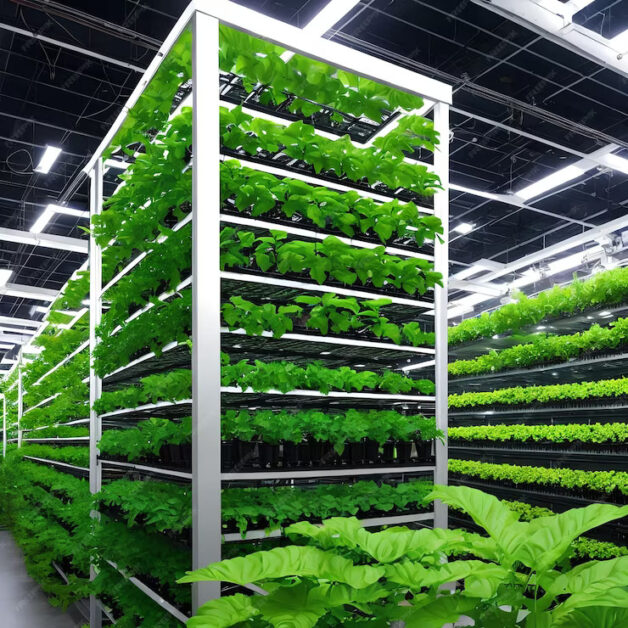
One popular type of vertical hydroponic system is the tower system, which consists of stacked tiers or columns that hold the plants. These towers are designed to efficiently use water and nutrients, providing an optimal growing environment for plants. Additionally, vertical systems can be designed with adjustable heights, allowing for easy access and maintenance. This is particularly useful for individuals with physical limitations or those who prefer a more ergonomic gardening experience. Overall, exploring vertical hydroponic systems opens up new possibilities for small-scale gardening by utilizing space in a smart and efficient manner.
“The Role of Automation and Technology in Hydroponics”
Automation and technology have revolutionized the field of hydroponics, making it easier and more efficient for gardeners to cultivate plants without soil. These advancements have streamlined tasks and increased productivity, allowing growers to maximize their yields with minimal effort. With automated systems, precise control over various environmental factors such as lighting, temperature, humidity, and nutrient delivery can be achieved, ensuring optimal growing conditions for plants.
One of the key benefits of automation in hydroponics is the ability to monitor and regulate nutrient solutions. Automated nutrient dosing systems precisely measure and adjust the nutrient levels in the water, ensuring that plants receive the exact amounts they need for optimal growth. This eliminates the guesswork associated with manual mixing and measuring, leading to more consistent and predictable results. Additionally, sensors and monitoring devices can be used to track vital parameters like pH and electrical conductivity (EC), enabling growers to make timely adjustments and maintain a stable and balanced nutrient solution.
Automation also plays a crucial role in improving lighting systems for hydroponic gardens. Growers can now utilize advanced technologies such as LED lights that offer precise spectral control, allowing them to tailor the light spectrum to meet the specific needs of different plant species and growth stages. Automated lighting systems can simulate natural daylight cycles, ensuring plants receive the ideal amount and intensity of light throughout the day. This not only enhances growth and productivity but also saves energy and reduces costs.
In summary, automation and technology have revolutionized hydroponics by offering precise control and monitoring of various environmental factors. From nutrient delivery to lighting systems, these advancements have simplified the growing process and increased yields. As technology continues to evolve, we can expect further advancements in automation that will continue to push the boundaries of what is possible in hydroponic cultivation.
“Creating a Successful Hydroponic Business”
When it comes to creating a successful hydroponic business, there are several factors to consider. First and foremost, it is crucial to have a strong understanding of hydroponics itself. This means being knowledgeable about different hydroponic systems, nutrient solutions, lighting options, and the overall principles of hydroponic gardening. With this foundation, you will be better equipped to make informed decisions and optimize your business operations.
Another key aspect of a successful hydroponic business is effective pest and disease management. As hydroponic gardens are typically more controlled environments, pests and diseases can still pose a threat if not properly addressed. Implementing preventive measures such as regular monitoring, sanitation practices, and biological controls can help minimize the risk of infestations and ensure a healthier crop. Additionally, staying up to date with the latest advancements in pest and disease management techniques can give your business a competitive edge.
To truly thrive in the hydroponic industry, it is essential to stay updated on the latest innovations and trends. The field of hydroponics is constantly evolving, with new technologies and techniques emerging regularly. By embracing these advancements and integrating automation and technology into your operations, you can streamline processes, increase efficiency, and ultimately enhance the overall productivity and profitability of your hydroponic business. Continual learning and adaptation will help you stay ahead in this dynamic industry.
• Having a strong understanding of hydroponics, including different systems, nutrient solutions, lighting options, and principles
• Implementing effective pest and disease management strategies to minimize risks and ensure healthier crops
• Staying updated on the latest innovations and trends in the hydroponic industry
• Embracing automation and technology to streamline processes and increase efficiency
• Continual learning and adaptation to stay ahead in this dynamic industry.
“The Future of Hydroponics: Innovations and Trends to Watch”
Hydroponics has quickly become a popular gardening method, and its future holds even more exciting innovations and trends. One of the key areas of focus is the development of new and improved nutrient solutions. In recent years, there has been extensive research into creating more efficient and sustainable hydroponic fertilizers that provide plants with the right balance of essential elements. These advancements aim to maximize plant growth and yield while minimizing environmental impact.
Another innovation to watch in the future of hydroponics is the integration of automation and technology. As technology continues to advance, we can expect to see more sophisticated automated systems that monitor and adjust environmental factors such as temperature, humidity, and lighting. This increased precision and control will not only make hydroponic gardening more efficient but also more accessible to people with limited time or expertise.
With these exciting innovations and trends on the horizon, the future of hydroponics looks promising. As more research is conducted and technologies are developed, we can expect to see further improvements in nutrient solutions, automation, and other aspects of hydroponic gardening. These advancements will undoubtedly enhance the productivity, sustainability, and accessibility of hydroponics, making it an increasingly viable option for gardening enthusiasts and commercial growers alike. Exciting times lay ahead in the world of hydroponics!
What are some common challenges in hydroponics and how can they be overcome?
Some common challenges in hydroponics include nutrient deficiencies, pH imbalances, and pest infestations. These can be overcome by regularly monitoring nutrient levels, adjusting pH as needed, and implementing pest management strategies such as biological controls or integrated pest management.
What are some advanced techniques in hydroponic cultivation?
Advanced techniques in hydroponic cultivation include aeroponics, aquaponics, and fogponics. These methods involve different ways of delivering nutrients and water to plants, allowing for increased efficiency and higher yields.
What are the top hydroponic crops for home gardens?
Some of the top hydroponic crops for home gardens include lettuce, herbs (such as basil and mint), tomatoes, cucumbers, and strawberries. These crops are well-suited for hydroponic systems and can thrive in controlled environments.
How important is pest and disease management in hydroponics?
Pest and disease management is crucial in hydroponics as the controlled environment can create ideal conditions for pests and diseases to thrive. Implementing preventative measures, such as maintaining cleanliness and using biological controls, can help minimize the risk of infestations and diseases.
What are some hydroponic techniques for indoor growing?
Some hydroponic techniques for indoor growing include using vertical systems, grow tents, or grow cabinets. These allow for maximizing space and creating a controlled environment with proper lighting, temperature, and humidity for optimal plant growth.
How can vertical hydroponic systems be utilized in small spaces?
Vertical hydroponic systems are ideal for small spaces as they utilize vertical space rather than horizontal. These systems can be wall-mounted or stacked to grow plants vertically, maximizing the use of limited space.
How does automation and technology play a role in hydroponics?
Automation and technology play a significant role in hydroponics by allowing for precise control of environmental conditions, nutrient delivery, and monitoring systems. Automated systems can help optimize plant growth, increase efficiency, and reduce manual labor.
What are some key factors in creating a successful hydroponic business?
Some key factors in creating a successful hydroponic business include thorough market research, proper planning, selecting the right crops, implementing effective marketing strategies, and ensuring consistent quality and customer satisfaction in the products.
What are some innovations and trends to watch in the future of hydroponics?
Some innovations and trends to watch in the future of hydroponics include the use of artificial intelligence for plant monitoring and optimization, the development of sustainable nutrient solutions, the integration of renewable energy sources, and advancements in vertical farming technologies. These advancements have the potential to revolutionize the hydroponic industry.

Pallavi Gupta is a burgeoning writer at SouthElMonteHydroponics, blending her passion for data analysis with a keen interest in biotechnology. Currently pursuing a Bachelor’s in Biotechnology at Amity University, Pallavi delves into the intricacies of life sciences while gaining hands-on experience in the exciting world of data analysis. Her unique background provides a fresh perspective on hydroponic farming, as she explores the intersection of biotechnology and sustainable agriculture. Through her writing, Pallavi aims to bridge the gap between data-driven insights and innovative farming practices, inspiring others to harness technology for a greener future.

